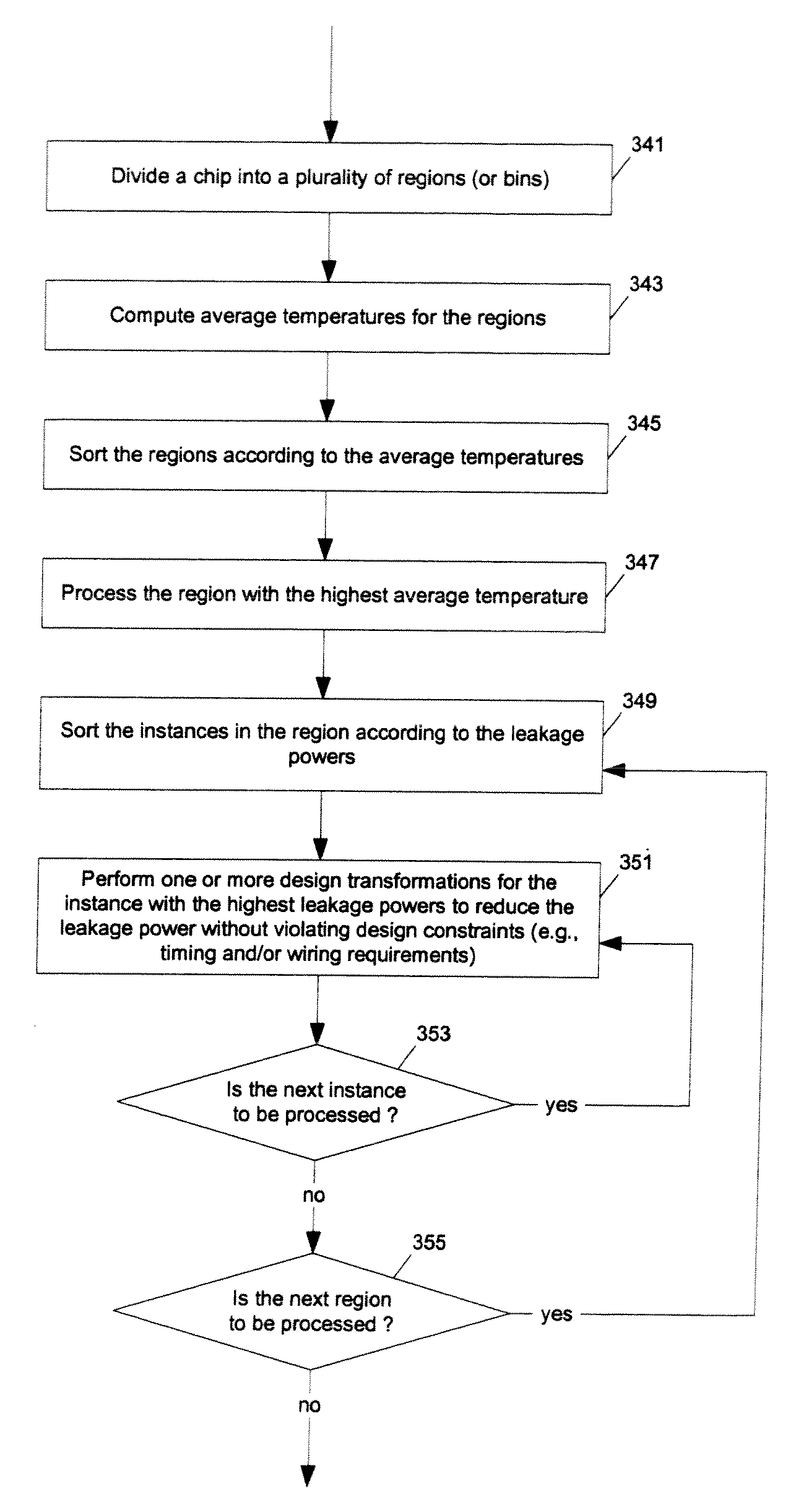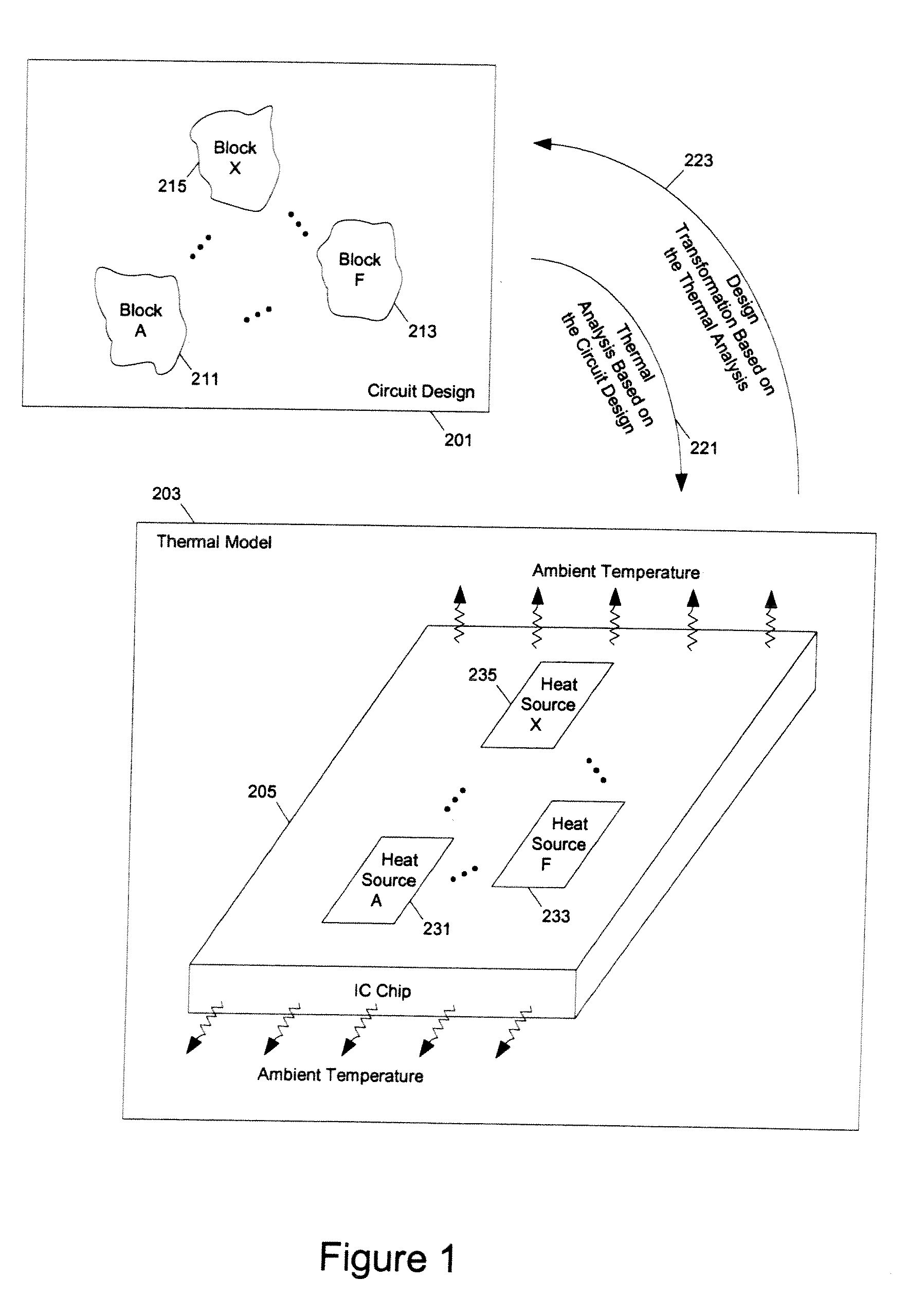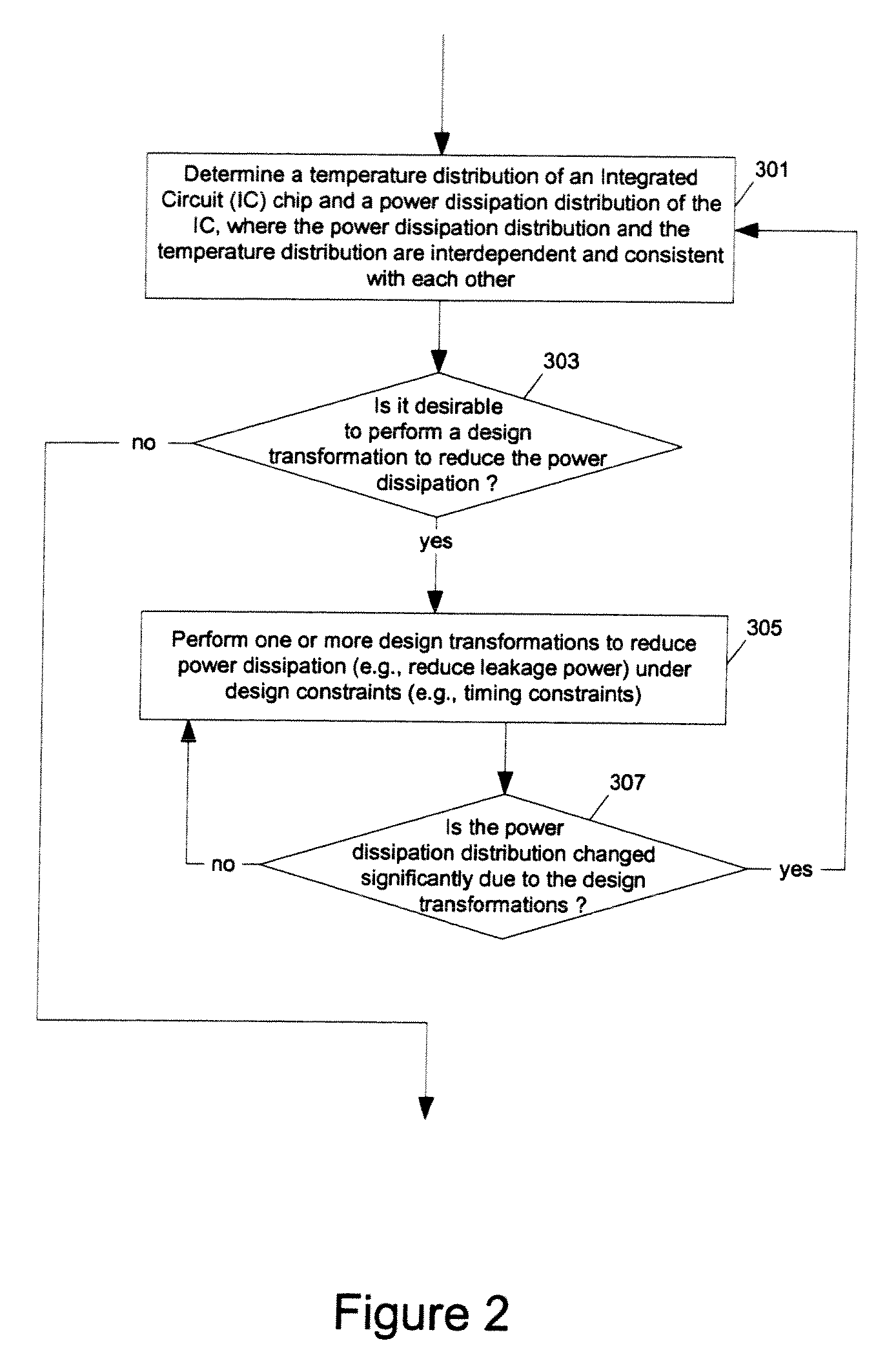Methods and apparatuses for thermal analysis based circuit design
a circuit design and thermal analysis technology, applied in the direction of cad techniques, program control, instruments, etc., can solve the problems of reducing the reliability of the ic chip, the typical non-uniform temperature field of silicon, etc., to reduce the power consumption, reduce the temperature dependent power usage, and improve timing
- Summary
- Abstract
- Description
- Claims
- Application Information
AI Technical Summary
Benefits of technology
Problems solved by technology
Method used
Image
Examples
Embodiment Construction
[0039]The following description and drawings are illustrative of the invention and are not to be construed as limiting the invention. Numerous specific details are described to provide a thorough understanding of the present invention. However, in certain instances, well known or conventional details are not described in order to avoid obscuring the description of the present invention. References to one or an embodiment in the present disclosure are not necessarily references to the same embodiment; and, such references mean at least one.
[0040]At least one embodiment of the present invention reduces the power dissipation and improves the timing of an integrated circuit to optimize the design. After computing the power dissipation in an original design, the temperature across the chip due to the heat generated is computed. Then, the components of the design are selectively transformed to reduce the power dissipation and to improve timing based on the temperature solution. For exampl...
PUM
 Login to View More
Login to View More Abstract
Description
Claims
Application Information
 Login to View More
Login to View More - R&D
- Intellectual Property
- Life Sciences
- Materials
- Tech Scout
- Unparalleled Data Quality
- Higher Quality Content
- 60% Fewer Hallucinations
Browse by: Latest US Patents, China's latest patents, Technical Efficacy Thesaurus, Application Domain, Technology Topic, Popular Technical Reports.
© 2025 PatSnap. All rights reserved.Legal|Privacy policy|Modern Slavery Act Transparency Statement|Sitemap|About US| Contact US: help@patsnap.com



